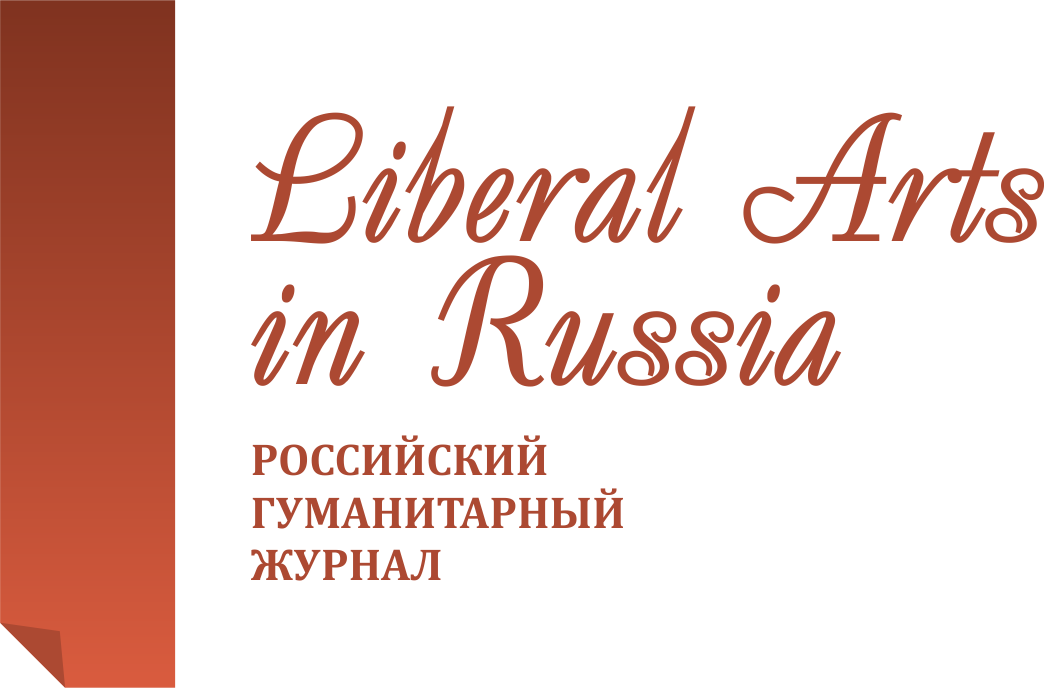Anthropocentricity of the texts in mass-media discource
Liberal Arts in Russia. 2018. Vol. 7. No. 3. Pp. 223-231.
Get the full text (Russian) Email: o.tayupova@mail.ruAbstract
The article is devoted to the analysis of the specificity of media texts representing in the aggregate the media discourse from the position of the anthropocentric scientific paradigm. The author determines the main aspects of the writer’s text category and peculiar properties of the recipient in the mass-media sphere. It is emphasized that at the present time texts on modern financial technology, implicitly advertising and political manipulative texts are highly demanded. Recognizing the importance of the role of the subject in discourse, the attention is drawn to the important role of the recipient. Special attention is paid to the dialogic texts, which are characterized by the presence of not only author, but also the interviewee, and the recipient to whom the information is addressed. The image of the author in the dialogic mass media text has its own characteristics, since in this case the writer and the respondent are co-authors. Linguistic personae in interviews are famous politicians, public characters, sportsmen, people of art and culture. On the one hand, they express collective opinion; on the other hand, they are individuals, so they are characterized by personal choice of language means. The use of the anthropocentric scientific paradigm helps to clarify the role of communicants in the process of creation and perception of media texts. The specificity of anthropocentrism in relation to the texts of mass-media discourse is stipulated by the fact that they have an impact not on individual linguistic persons, but on different social groups, and by wide range of non-verbal means that are used in the process of creation of these texts. Thus, on the basis of the use of certain linguistic means, both grammatical and lexical, including connotative words, a linguistic portrait of mediacommunicants is formed.
Keywords
- • mass-media discource
- • mass media text
- • anthropocentrism
- • language personality
- • recipient
- • sender
- • mediacommunication
References
- Maslova A. Yu. Vvedenie v pragmalingvistiku [Introduction to pragmalinguistics]. Moscow: Flinta, 2008.
- Kubryakova E. S. Chelovecheskii faktor v yazyke. Yazyk i porozhdenie rechi [The human factor in language. Language and generation of speech]. Moscow: Nauka, 1991.
- Kostomarov P. I. Vestnik Kemerovskogo gosudarstvennogo universiteta. 2014. No. 1-2(58). Pp. 198-203.
- Karaulov Yu. N. Russkii yazyk i yazykovaya lichnost' [Russian language and linguistic personality]. Moscow: Nauka, 1987.
- Solganik G. Ya., Dronyaeva T. S. Stilistika i kul'tura rechi russkogo yazyka [Stylistics and culture of speech of the Russian language]. Moscow: Akademiya, 2012.
- Kaida L. G. Avtorskaya pozitsiya v publitsistike (funktsional'no-stilisticheskoe issledovanie gazetnykh zhanrov): avtoref. dis. ... d-ra filol. nauk. Moscow, 1992.
- Smetanina S. I. Media-tekst v sisteme kul'tury (dinamicheskie protsessy v yazyke i stile zhurnalistiki kontsa XX veka) [Media text in the system of culture (dynamic processes in the language and style of journalism of the end of the 20th century)]. Saint Petersburg: Izd-vo Mikhailova V. A., 2002.
- Solganik G. Ya. Yazyk sovremennoi publitsistiki. 3 ed. Moscow: Flinta, 2008. Pp. 13-30.
- Evsyukova T. V, Butenko E. Yu. Lingvokul'turologiya [Lingvoculturology]. Moscow: Flinta, 2016.
- Benvenist E. Obshchaya lingvistika [General linguistics]. Moscow: Editorial URSS, 2002.
- Duskaeva L. R. Mediatekst kak poliintentsional'naya sistema: sb. statei. Saint Petersburg: izd-vo S.-Peterb. gos. un-t, 2012. Pp. 10-16.
- Bychkovskaya N. V. Sintaktiko-pragmaticheskie osobennosti tekstov interv'yu v massmediinom diskurse: avtoref. dis. ... kand. filol. nauk. Ufa, 2016.
- Sandig B. Textstilistik des Deutschen. 2. völlig neu bearb. Aufl. Berlin: Walter de Gruyter, 2006.
- Kamenskaya O. L. Tekst i kommunikatsiya [Text and communication]. Moscow: Vysshaya shkola, 1990.
- Burger H. Mediensprache. Eine Einführung in Sprache und Kommunikationsformen der Massenmedien. 3 völlig neu bearb. Aufl. Berlin: Walter de Gruyter, 2005.
- Küsters I. Narrative Interviews. Grundlagen und Anwendungen. 2. Aufl. Wiesbaden: VS Verlag, 2009.
- Häusermann J. Journalistische Texten. Sprachliche Grundlagen für professionelles Informieren. 2 aktualisierte Aufl. Konstanz: UVK Verlagsgesellschaft, 2011.
- Bucher H.-J. Handbuch der Dialoganalyse. Tübingen: Niemeyer, 1994. Pp. 471-491.
- Dobrosklonskaya T. G. Medialingvistika: sistemnyi podkhod k izucheniyu yazyka SMI [Medialinguistics: a systematic approach to the study of the media language]. Moscow: Flinta, 2008.
- Perrin D. Angewandte Linguistik. Tübingen u. Basel: A. Francke Verlag, 2004, 255-275.
- Der Spiegel. Zeigen, was grün ist. URL: http: //www.spiegel.de.
- Tayupova O. I. Vestnik Bashkirskogo universiteta. 2017. No. 2. Pp. 467-471.
- Chikileva L. S. Liberal Arts in Russia. 2018. Vol. 7 No. 1. Pp. 20-29.
- Kotstsolino M. Neverbal'naya kommunikatsiya. Teorii, funktsii, yazyk i znak. [Nonverbal communication. Theories, functions, language and sign]. 2nd ed. Khar'kov: Gumanitarnyi tsentr, 2015.
- Islamova F. A. Doklady Bashkirskogo universiteta. 2017. Vol. 2. No. 2. Pp. 260-265.
- Humboldt V. fon. Izbrannye trudy po yazykoznaniyu. Moscow: Progress, 1984. Pp. 37-298.
